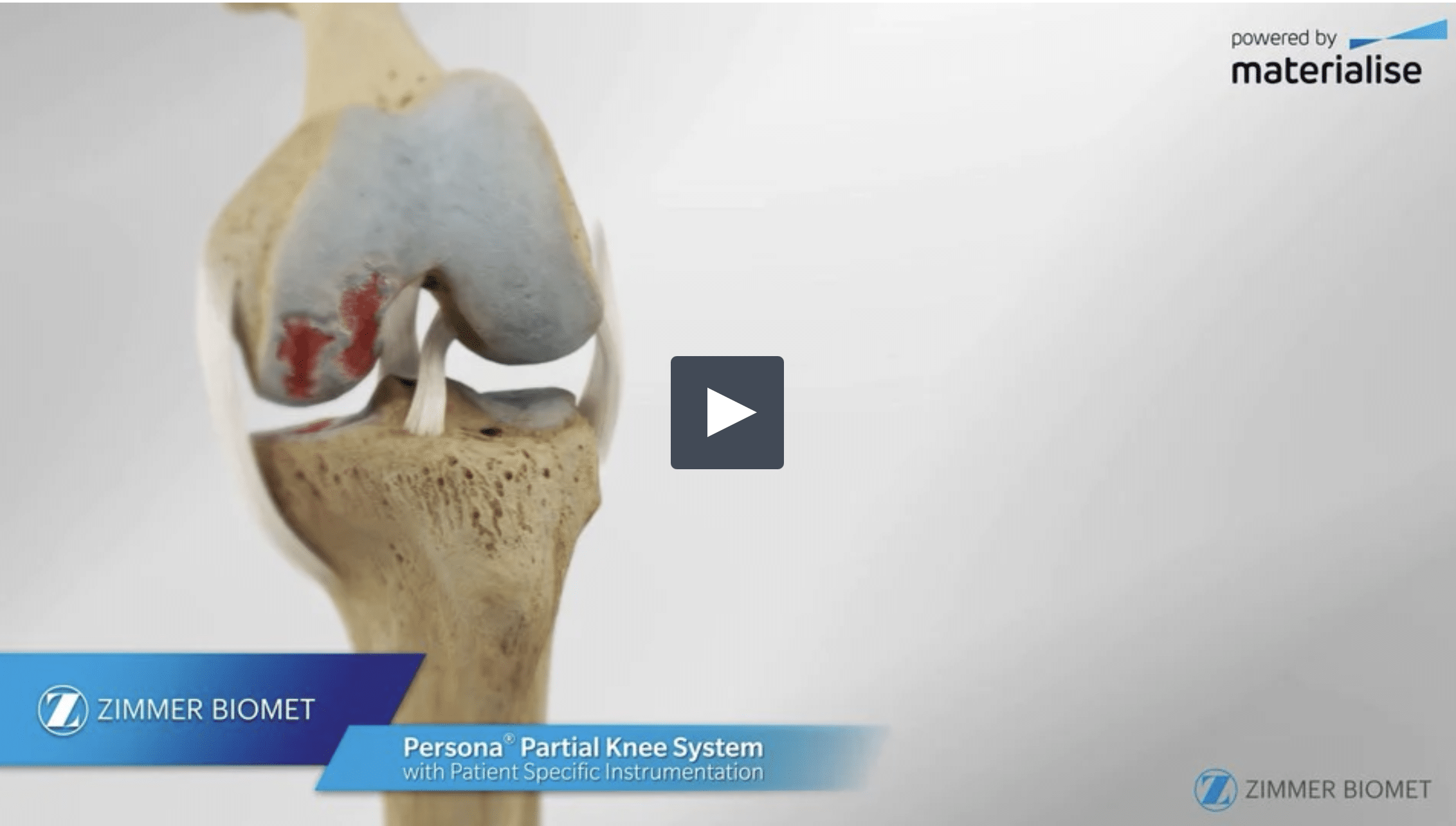1) Under-correction of limb alignment: ensures that the weight-bearing axis is not transferred to the lateral compartment. This helps prevent overload and disease progression in the lateral compartment, and so reduces the potential risk of revision1. 2-3mm of laxity in both flexion and extension should ensure that the mechanical axis falls between the tibial spines and the centre of the resurfaced compartment1.
2) Optimal component alignment: component malalignment leading to edge loading can accelerate polyethylene wear, resulting in early revision1. Precise alignment between the femoral and tibial components is vital. Aim for central contact between the femoral component and the bearing surface1.
3) Restoring soft-tissue tension: enables the knee to remain stable throughout the range of motion1. It is suggested that well-balanced collateral ligaments and the retention of the cruciate ligaments may help explain the superior functional outcomes in PKR compared to TKR1.
4) Tibial slope: should be matched to the native slope. Avoid an excessive slope, which can put tension on the ACL, while an insufficient or reverse slope may create a tight flexion space and limit flexion1. “Slope of 5 to 7° is appropriate for most patients1.”
5) Correct component sizing: oversized tibial components that overhang medially can cause a painful MCL impingement, while undersized tibial components may not achieve cortical coverage, and so be at risk of subsidence and loosening1. Oversized femoral components can cause patella impingement1.
Please follow the link to the full article where you will also find recommendations about patient selection and the ‘Spacer Block’ surgical technique for the personalised fixed-bearing PKR: https://www.sciencedirect.com/science/article/pii/S1877132720301330


